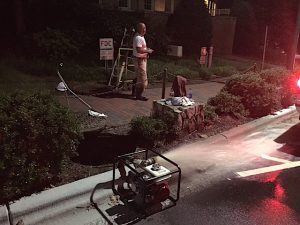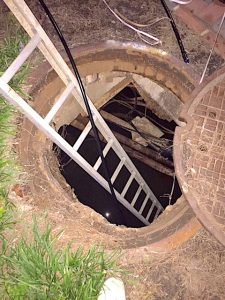ITS has begun installing a couple miles of fiber on campus that will enable the Athletics department to provide live video and data for the ACC Digital Network that ESPN and the Atlantic Coast Conference are launching in 2019.
“No one will be on this fiber but Athletics,” said Chad Ray, Manager of Transport Operations, a group within ITS Communication Technologies.

Athletics buys fiber for network
This is the first project in which ITS has installed an entire fiber backbone for use solely by one campus entity. When ITS lays additional fiber, its customer is usually the University for fiber that the entire campus will use. For this sports network project, Athletics is ITS’ customer. Athletics is buying the fiber. ITS is installing it and will maintain the fiber for Athletics. For more than a decade, Athletics has leased fiber from ITS for video production.
Athletics needs 48 strands of single-mode, long-haul fiber between the Dean Smith Center and Carmichael Arena and spur cables to the athletic venues.
Athletics will transmit 200+ events a year
Athletics will transmit more than 200 athletic events per year from the sports venues to the production studios and main hubs at the Smith Center and Carmichael and then on to the ACC DN linear channel that the ACC and ESPN are launching.
Currently, there are only two pairs of fiber to each arena. Considering Athletics would have to share that fiber capacity with all of the University’s networking needs and for the Distributed Antenna System, those two pairs are not sufficient.

In addition, video needs to have a lot fewer splices and bends in the fiber than data requires. Remember, light is shooting through these fiber-optic lines. Like a flashlight, the farther away it is, the dimmer it gets. Attenuation, the amount of signal or power lost from one end to another, depends on the equipment. To work properly, video needs to have lower attenuation. To limit the amount of attenuation for this project, Transport Operations has to pull longer runs of fiber, Ray said.
Project may have second phase
In the first phase of this project for Athletics, Transport Operations is installing fiber to link the Smith Center, Carmichael, the football and baseball stadiums, and planned indoor and outdoor facilities for football, soccer and lacrosse. This work is expected to be completed by the Fall semester.
Additional fiber could be installed in a possible second phase at the University’s outlying athletic venues for golf, tennis and softball.
